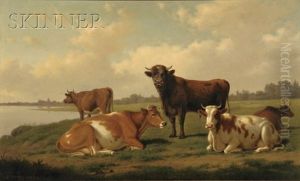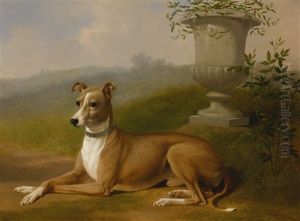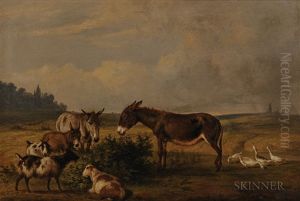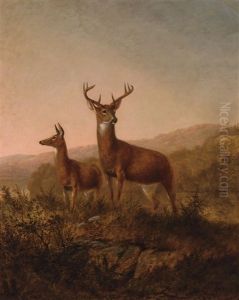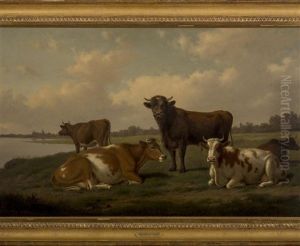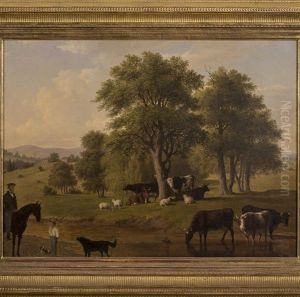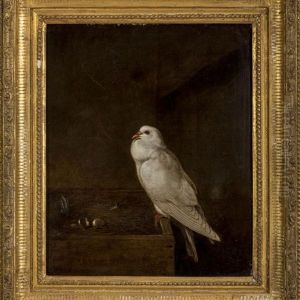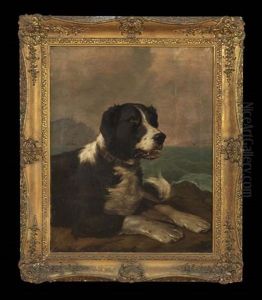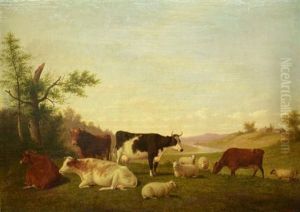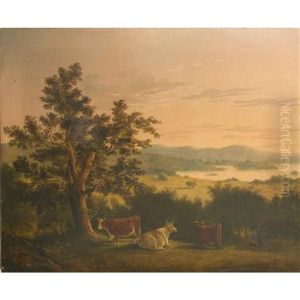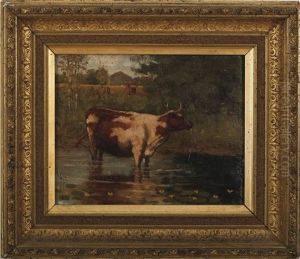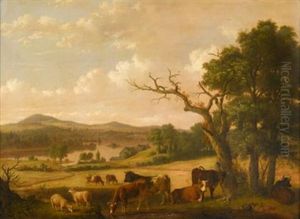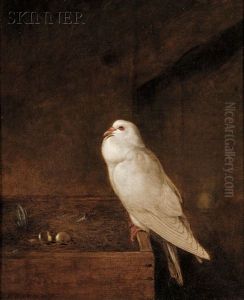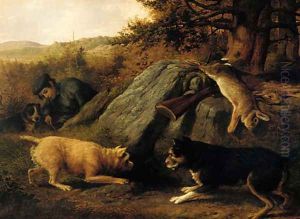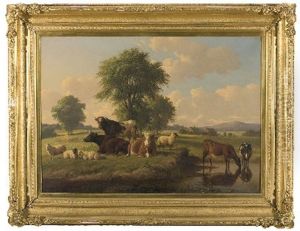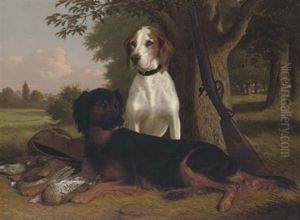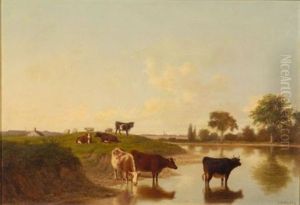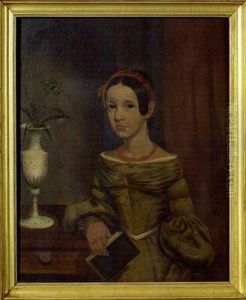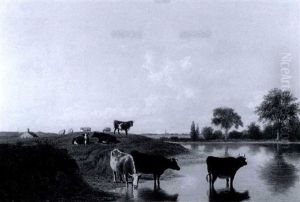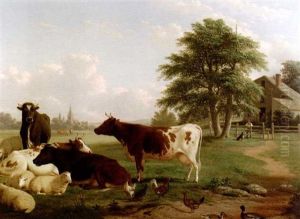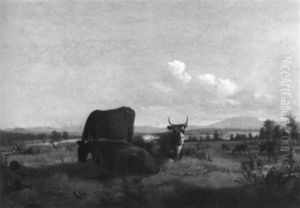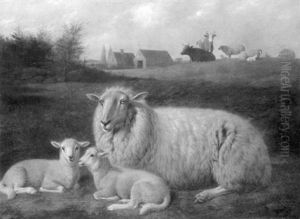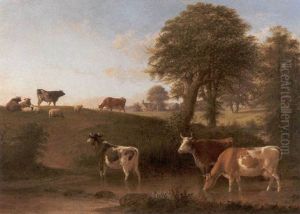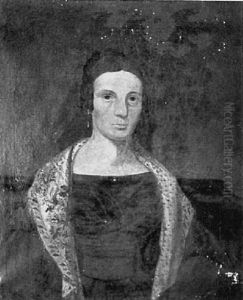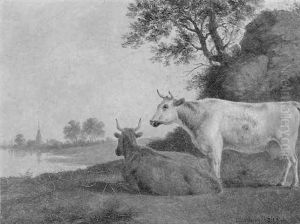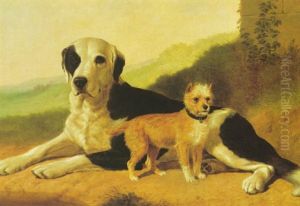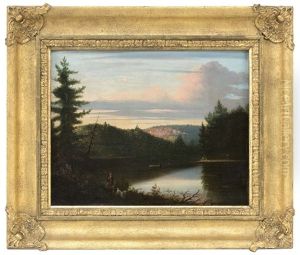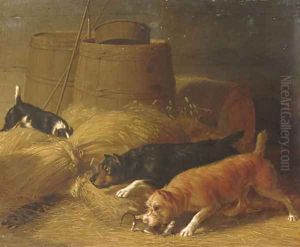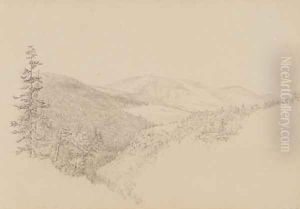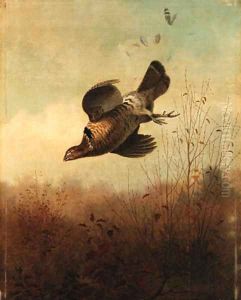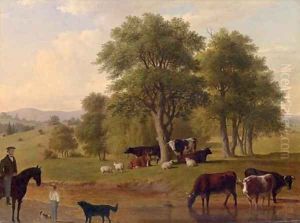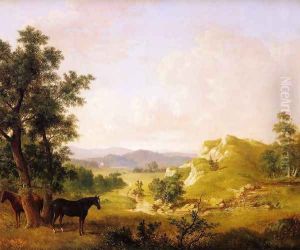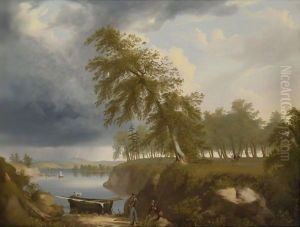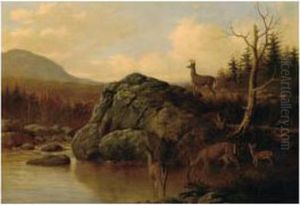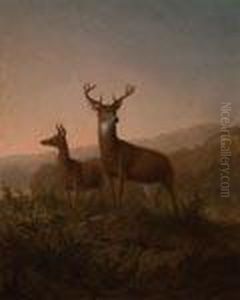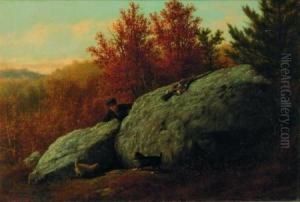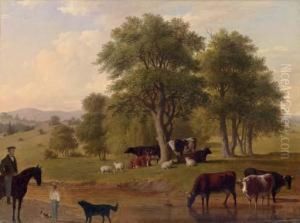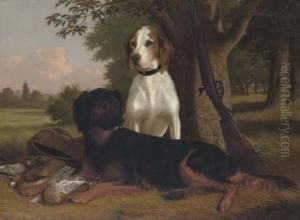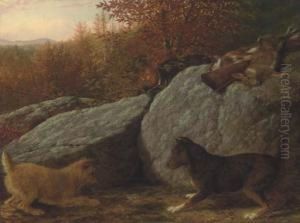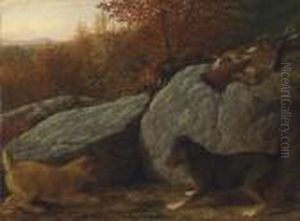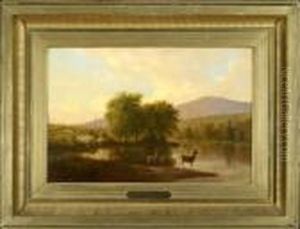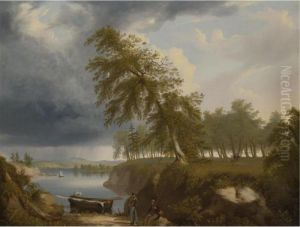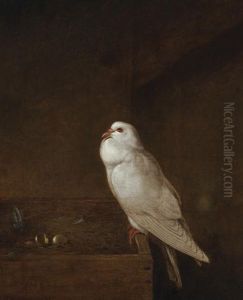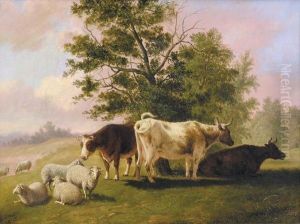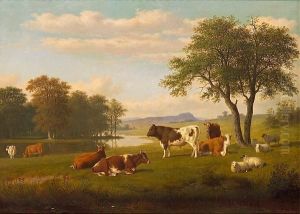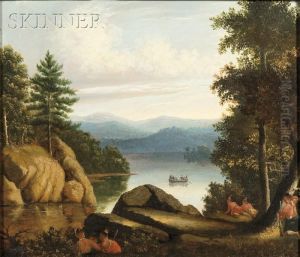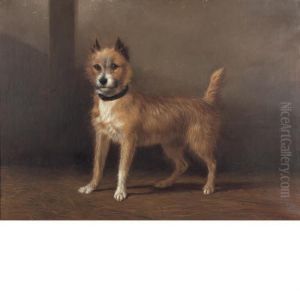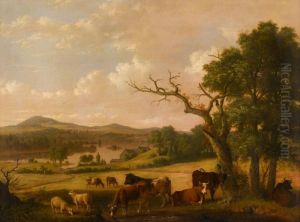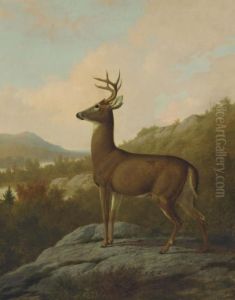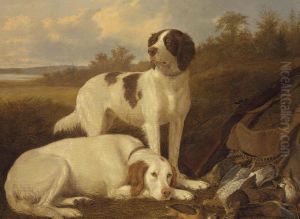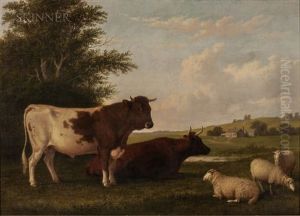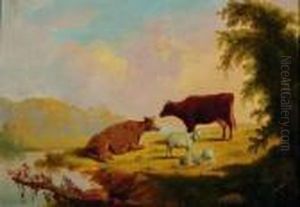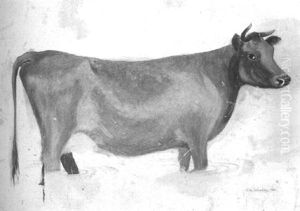Thomas Hewes Hinckley Paintings
Thomas Hewes Hinckley was an American painter, born in 1813 in Milton, Massachusetts. He is primarily known for his highly detailed paintings of animals, particularly game birds and dogs. Hinckley's work demonstrates a meticulous attention to the natural details and anatomy of the animals he portrayed, which won him recognition during his lifetime.
Hinckley's interest in art began at a young age, and he pursued his passion despite the lack of formal art education available to him at the time. He was largely self-taught, developing his skills through practice and observation of nature. His depictions of animals in their natural habitats were not only artistic endeavors but also contributed to the study of American wildlife.
Throughout his career, Hinckley's paintings were exhibited at important institutions, such as the Boston Athenæum and the National Academy of Design in New York. His work resonated with the 19th-century American audience, which had a strong interest in natural history and the wilderness of the American landscape.
In addition to his animal subjects, Hinckley also painted portraits, landscapes, and historical scenes. However, it is his animal paintings that have left a lasting legacy, influencing later artists who also specialized in wildlife art.
Hinckley lived through a time of significant change in America, witnessing the transformation of the country through industrialization and the Civil War. Despite these tumultuous times, he continued to focus on the natural world, finding beauty and solace in the depiction of wildlife.
Thomas Hewes Hinckley passed away in 1896, leaving behind a body of work that continues to be appreciated for its contribution to American art and the early documentation of American wildlife. His paintings can be found in various museums and private collections, serving as a testament to his skill and dedication to the naturalistic representation of animals.
